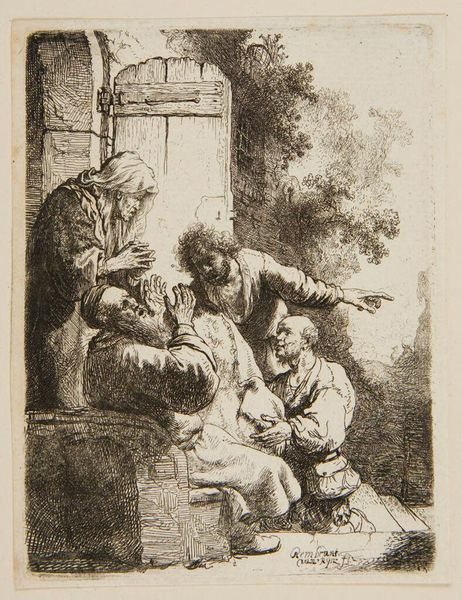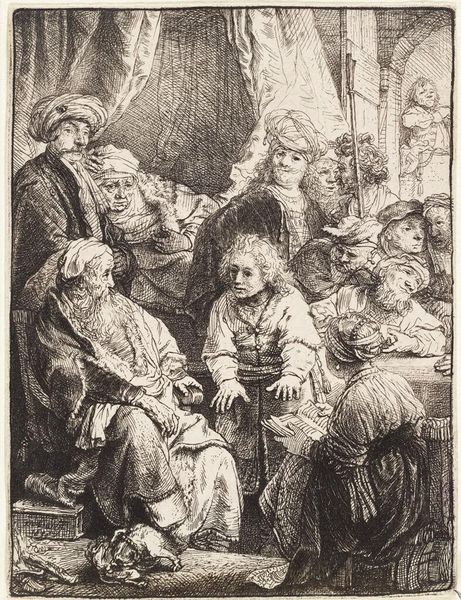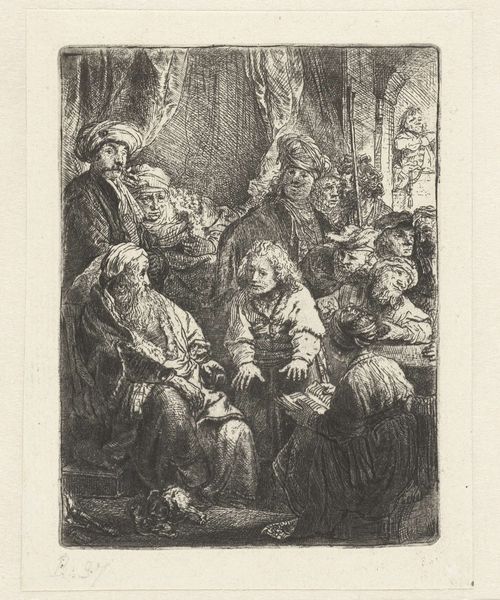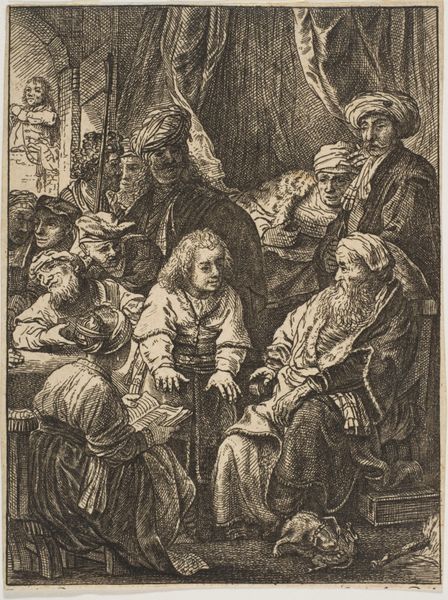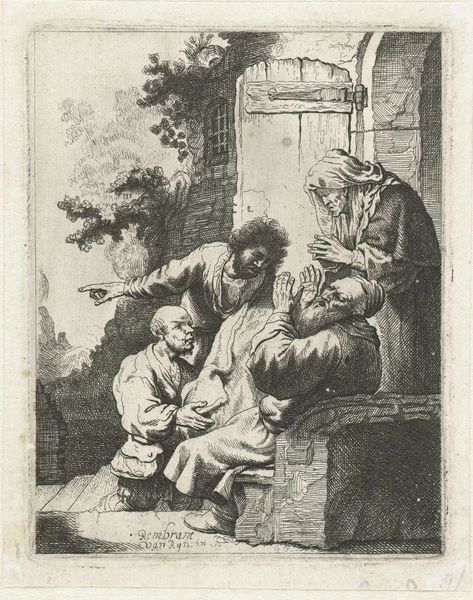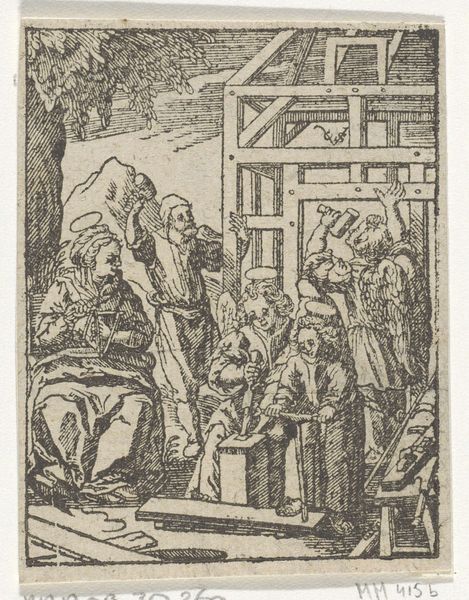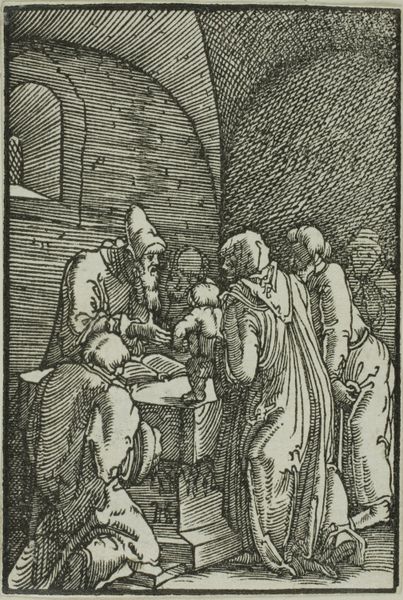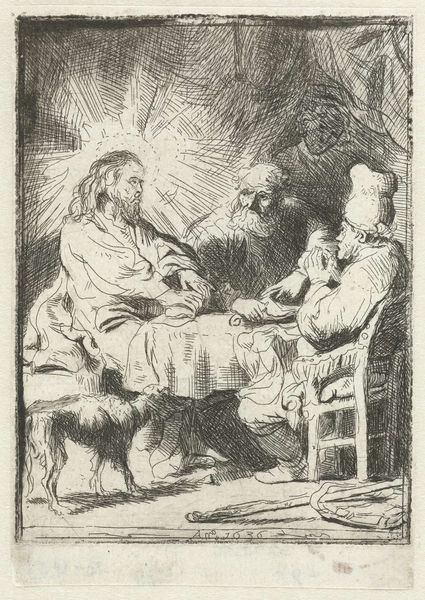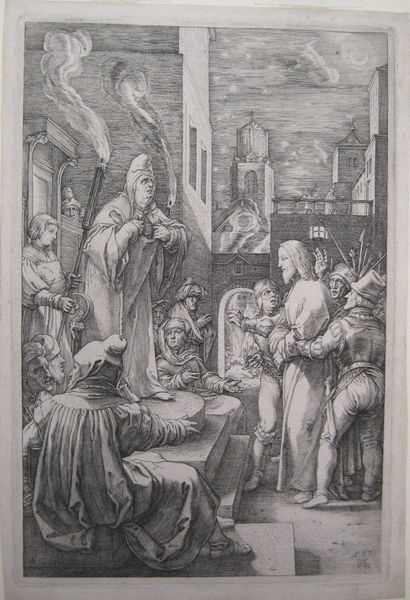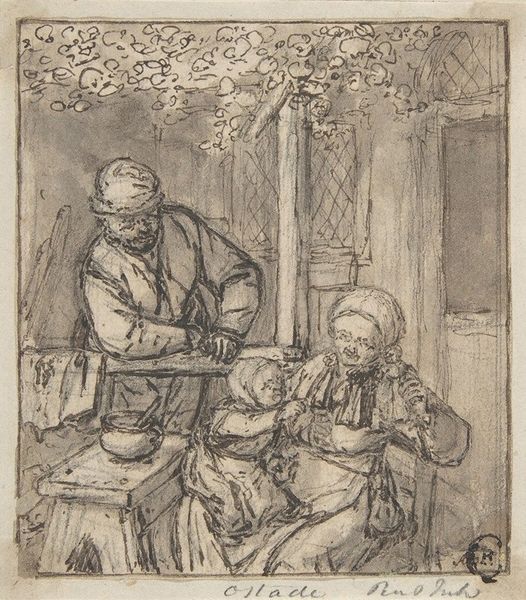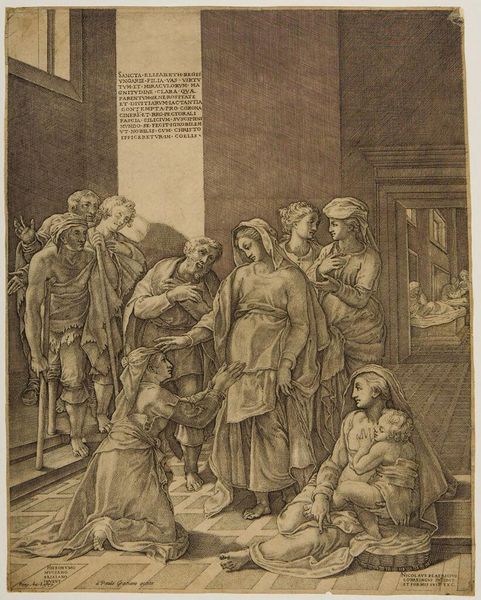
print, etching, ink
#
portrait
#
ink drawing
#
narrative-art
#
baroque
#
dutch-golden-age
# print
#
etching
#
figuration
#
ink
#
line
#
history-painting
Dimensions: 11 x 8 cm
Copyright: Public domain
Curator: This etching, "Jacob Telling his Dreams," made by Rembrandt van Rijn around 1638, is so captivating in its miniature scale. What catches your eye first? Editor: The sheer density of it all! The cross-hatching to create shadows is quite something, isn’t it? So much dark ink applied to paper to build up drama… it almost feels claustrophobic. Curator: Yes, the way Rembrandt manipulates light and shadow even within such a small space amplifies the tension in this family dynamic. The etching technique lends itself so well to creating these nuanced emotional textures. Do you get a sense of skepticism in the observing crowd? Editor: Absolutely. You can almost feel the economic anxieties swirling amongst the siblings surrounding Jacob; it seems their reactions are so tied to questions of succession. Rembrandt's masterful ability to convey these themes using humble materials is pretty undeniable. What exactly was the printing process involved? Curator: Rembrandt expertly used etching: acid would eat into a metal plate according to lines the artist drew in wax, allowing for those lines to then be filled with ink and transferred onto the paper. Thinking about this image reproduced from a matrix really gets you considering how accessible this story became thanks to the printing press. Do you think Rembrandt was conscious of this shift? Editor: Surely, and his exploitation of the medium proves this. Consider the time involved: grinding pigments, preparing the copper plate, the application of grounds. The consumption involved in such printing runs is substantial, both for Rembrandt himself and the communities in which these etchings circulated! Beyond artistry, he’s embedded labor itself within each work. The dreams here carry a weight far beyond religious meaning. Curator: It’s a marvelous intersection of art and economy, with faith flickering somewhere underneath it all! When I look closely, I sense the dream is more of a shared burden, or perhaps a test for both father and sons… And it is lovely how he captures intimate emotional truths with very rudimentary tools. Editor: Right! I now realize that for every visionary, there's the paper maker, the metalworker and countless others contributing their hands and resources! Thinking about the social impact woven in these details offers so many interesting insights. Curator: It enriches how we perceive everything; the mundane is part of something much larger!
Comments
No comments
Be the first to comment and join the conversation on the ultimate creative platform.

